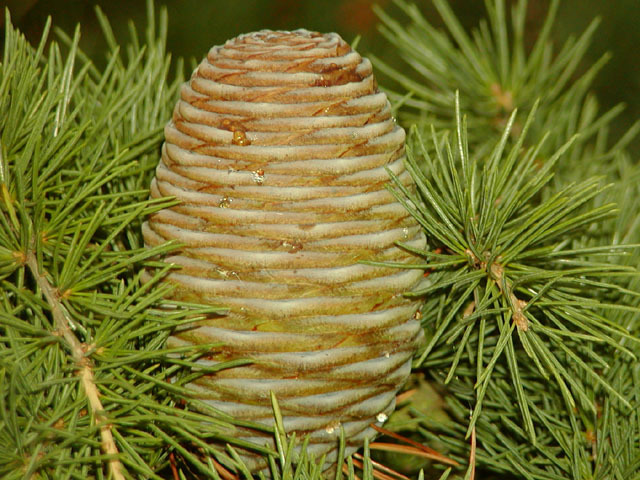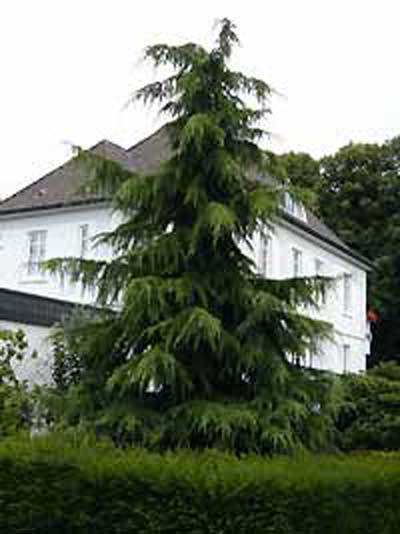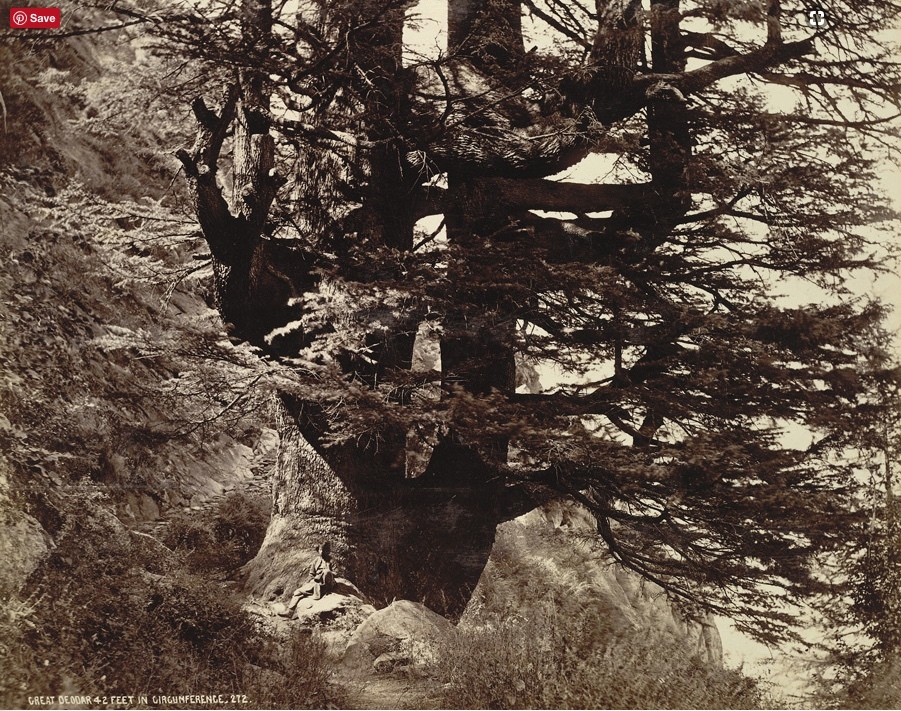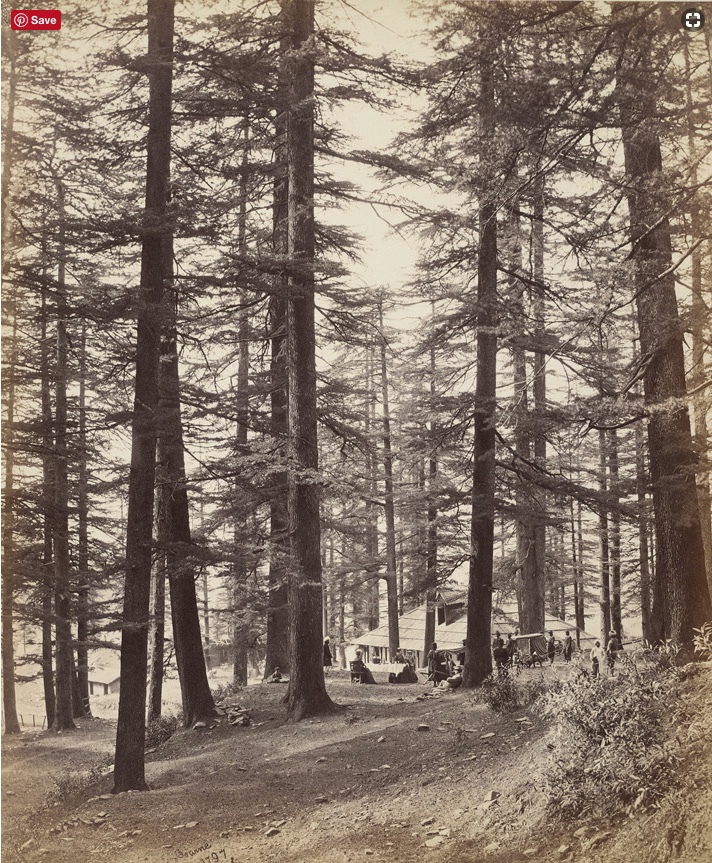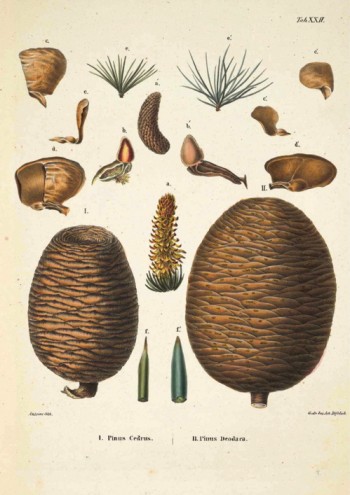
Cedrus deodara, as described in 1830 by (Roxb. ex D. Don) George Don, in Loudon's Hortus Britannicus, is commonly known in the English language as Deodar cedar, Himalayan cedar, or deodar; as well as देवदारॠ(devadÄru) in Sanskrit; देवदार (devadÄr) or दारूक (dÄruk) in Hindi; دیودار (devadÄr) in Urdu; or as é›ªæ¾ (xue song) in Chinese.
Description. Himalayan cedar is an evergreen coniferous species of tree that grows to mature heights of 150 feet (50 m) tall, with a trunk up to 10 feet (3 m) in diameter, measured at breast height.

Distribution. This species is native to the western Himalayas in eastern Afghanistan, northern Pakistan (especially in Khyber Pakhtunkhwa and the regions of Azad Kashmir), northern Republic of India - Jammu and Kashmir, Himachal Pradesh and Uttarakhand states, southwestern-most Tibet and western Nepal, growing at elevations of 5,000 to 10,500 feet (1,500 - 3,200 m) above sea level.
Hardy to USDA Zone 6 - cold hardiness limit between -10° to 0°F (-23.2° and -17.8°C).

